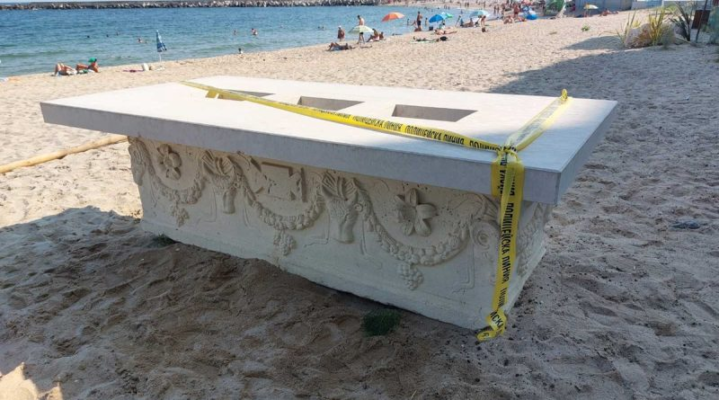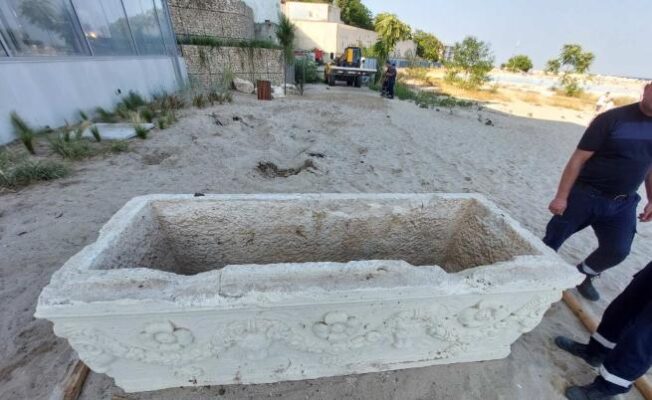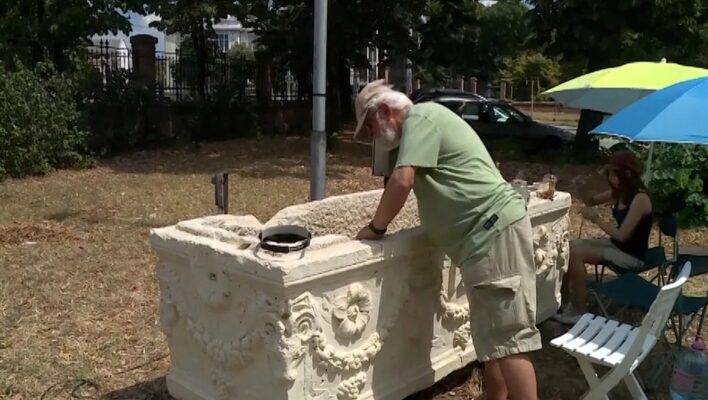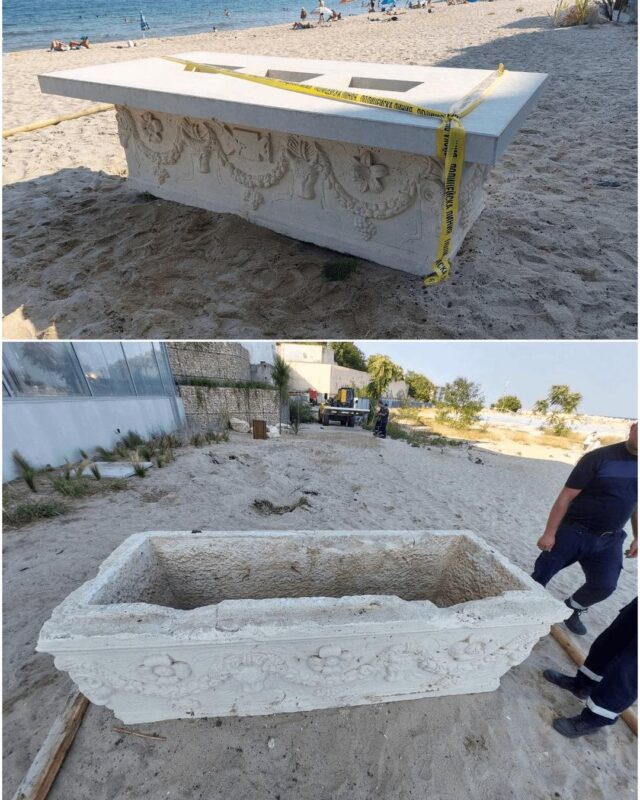A casual visit to a beach bar in Varna, Bulgaria, turned into a remarkable archaeological discovery. A tourist noticed an ancient Roman sarcophagus, estimated to be 1,700 years old, repurposed as a table, shedding light on the unexpected journey of this historical artifact. Follow archeology.dulichvn.net to discover many hidden mysteries that have yet to be discovered.

Discovery of a 1,700-Year-Old Roman Sarcophagus at a Beachside Bar
A seemingly ordinary day at a beachside bar in Varna, Bulgaria, turned into a moment of historical revelation when a tourist noticed something unusual: a Roman sarcophagus, estimated to be 1,700 years old, being repurposed as a table. This astonishing find highlights the surprising ways history can intertwine with modern life.
A Hidden Relic in Plain Sight
The sarcophagus, featuring intricate carvings and delicate details, had blended into the bar’s decor for years. Patrons of the establishment had used it as a table, oblivious to its true identity. It wasn’t until a history enthusiast visited the bar and recognized the unique patterns and craftsmanship that the sarcophagus’s historical significance came to light.
An Accidental Discovery
The discovery was purely serendipitous, underscoring how historical artifacts often emerge in the most unexpected places. What had been treated as a mundane piece of furniture turned out to be a relic from the Roman Empire.
The Role of Observant Individuals
This case demonstrates the critical role everyday observers can play in uncovering history. Without the tourist’s keen eye and knowledge, this sarcophagus might have remained unnoticed for years to come.

The Importance of the Discovery
The uncovering of a 1,700-year-old Roman sarcophagus at a beach bar in Varna, Bulgaria, is more than just a surprising anecdote—it is a window into the past, offering rich insights into Roman culture, society, and artistry.
Intricate Roman Motifs
The sarcophagus is adorned with meticulously carved Roman motifs, featuring scenes believed to represent mythological tales or symbolic elements tied to the deceased’s life. These carvings are a testament to the artistic expertise of ancient Roman sculptors.
Connection to Roman Beliefs
The imagery may reflect Roman cultural values or religious practices, emphasizing themes like the journey to the afterlife, heroism, or familial honor. Each symbol carved into the stone contributes to a deeper understanding of the Roman worldview.
Rare Artistic Preservation
Finding such a well-preserved example of Roman craftsmanship is significant. Many artifacts from this era have been lost to time, erosion, or misuse, making this discovery a rare and valuable piece of history.

What Happens Next?
The discovery of the Roman sarcophagus being used as a bar table in Varna, Bulgaria, has set in motion a series of critical actions aimed at preserving this ancient artifact and uncovering its story.
Securing the Artifact
Local authorities, archaeologists, and historians have stepped in to ensure the sarcophagus is safely removed from its current location. The delicate task of transporting such a heavy and fragile piece of history requires careful planning to prevent any further damage.
Relocation to a Protected Site
Once recovered, the sarcophagus will be moved to a secure facility, such as a museum or research center. This will allow experts to conduct a thorough examination of the artifact under controlled conditions.
Preservation Techniques
Specialized conservation teams will assess the sarcophagus’s condition, applying preservation techniques to stabilize its structure and protect it from future deterioration.
See more: the Stone Gothic House An Ode to Forgotten Grandeur
Conclusion
The discovery of a 1,700-year-old Roman sarcophagus at a beach bar in Varna is a testament to the enduring legacy of history. It serves as a reminder that traces of the past are often hidden in the most unexpected places, waiting to be rediscovered.


CÁC TIN KHÁC
Mary Walton: The Forgotten Inventor Who Helped Clean Up America’s Cities
Tomb of Queen Nefertari in the Valley of the Queens, Egypt
Discover the Hypostyle Hall of the Temple of Hathor at Dendera
Venus de Losange: Unveiling the Mystery of a 20,000-Year-Old Paleolithic Icon